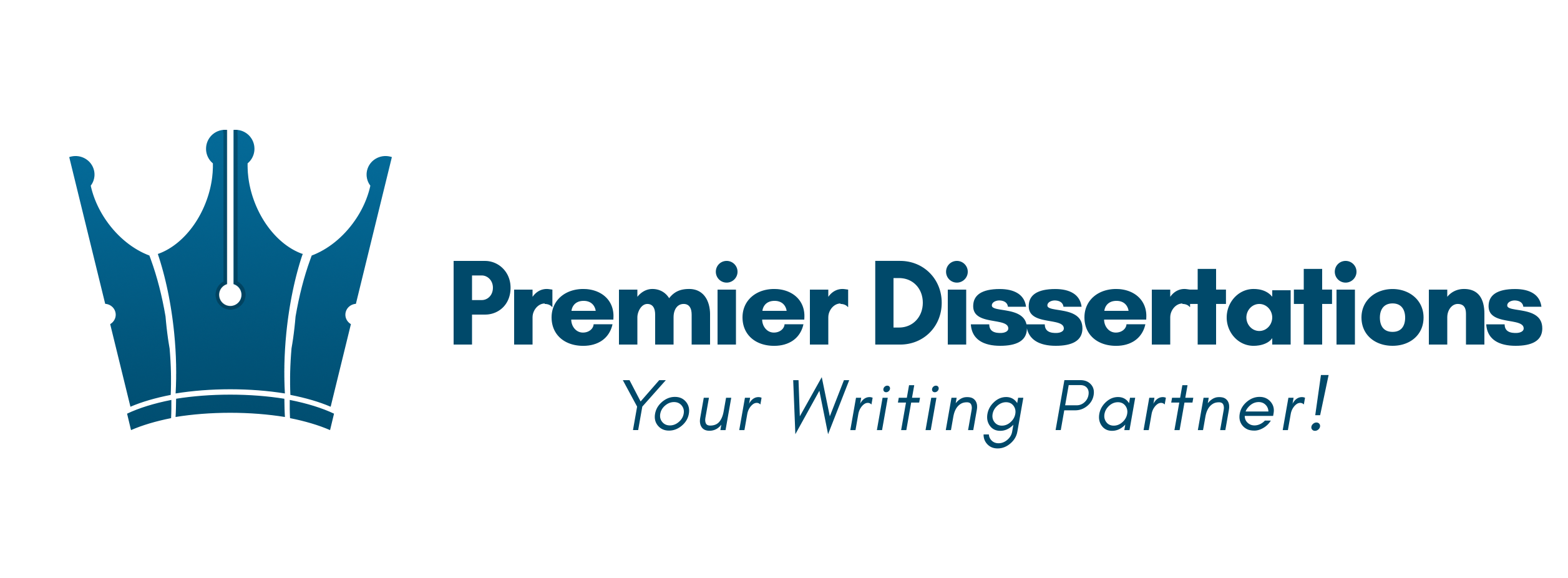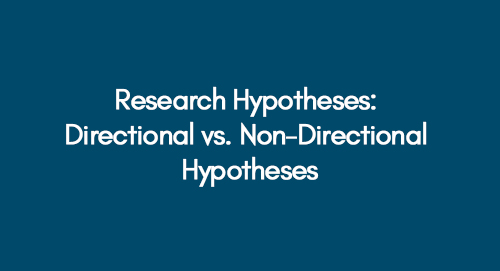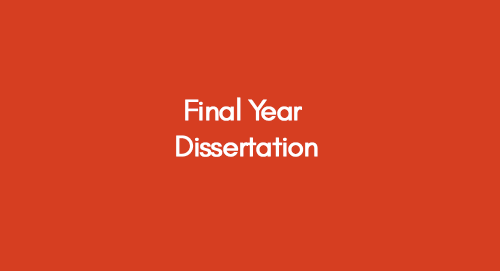
Gender Dissertation Topics | List of 12 Interesting Ideas in 2024
December 2, 2022
Impact of Online Shopping on UK Retail Industry: A Case of Covid-19
December 9, 2022This article will explain the terminology, methods and techniques of quantitative data analysis in simple, digestible chunks.
One of the key parts of any dissertation is data analysis. This process can seem daunting to many, but it doesn't have to be. We'll outline the basics of analysing quantitative data for your dissertation. We'll also provide tips and resources to help make the process easier.
Yes, data analysis is a complex subject and requires time, effort and practice to master but gaining the basic understanding to get you going aren't that hard. We have divided this blog post into the following spheres to get you started.
- What is quantitative data
- What is quantitative data analysis
- why do you need to analyse data for your dissertation
- Branches of quantitative data analysis
- Quantitative data methods
- How to choose the right method of analysis for your data
- The benefits of using a statistical software package to analyse your data
- Tips for ensuring that your analysis is accurate and reliable
What is quantitative data?
Quantitative data is a type of data that can be measured and evaluated. It is numerical, and you can collect such data by conducting surveys, experiments and other quantitative methods.
Quantitative data makes it possible to derive correlations between variables and understand empirical relationships between numbers. It will help you see the connection between different variables.
For example, you can use quantitative data to find the average number of users who visit a website each month, the number of homes sold in a certain area over a certain period of time, how many times people click on an advertisement, etc.
Precisely, quantitative data is the numerical evidence of a study, and it will allow you further your research by virtue of analysis.
Quantitative data is therefore used by businesses and scientists to measure trends and make important decisions about their products and services.
In marketing, it is used to measure things like customer satisfaction or loyalty levels; using quantitative surveys or tests allows researchers to gain knowledge from participants’ responses in an unbiased way.
All in all, quantitative data enables us to better understand the world around us and make more informed decisions.
Also Read: What is a Quantitative Dissertation
What is quantitative data analysis?
Quantitative data analysis uses quantitative techniques to analyse numerical data and draw insightful conclusions.
You will employ statistical methods in quantitative data analysis to make sense of huge numbers.
These methods include measures of
- Central tendency
- Correlation
- Regression analysis
- Factor analysis
Quantitative data analysis will help you identify patterns and trends that could further explain the nature of an observed phenomenon or the variable you are studying. By discerning correlations between different variables and test results, quantitative data can provide insight into potential causal relationships.
Businesses and organisations make informed decisions based on quantitative evidence to optimise their efficiency, effectiveness and performance. Quantitative analysis is, therefore, invaluable for decision-making within organisations when dealing with numeric information.
Overall, quantitative data analysis is an extremely powerful tool for exploring quantitative data sets and extracting meaningful information.
Why do you need to analyse data for your dissertation?
The purpose of research is to investigate the phenomenon, find solutions or uncover knowledge or propagate progress. The ability to analyse data helps you to identify patterns, observe anomalies, and create hypotheses.
So, quantitative data analysis serves 3 purposes in a dissertation
- To identify differences between two sample sets. For example, the consumer preference for certain products in the market.
- To observe, ascertain, and manipulate the relationship between two variables—for example, the impact of political stability on regional trade.
- To create and rigorously scientifically test the hypothesis. For example, the impact of the vaccine on controlling disease spread.
Branches of quantitative data analysis
As we have discussed, the basis of the quantitative data analysis lies in the statistical analysis method, and it has 2 major types.
A. Descriptive Statistics
Descriptive statistics is focused on samples. It leverages visual tools like graphs and tables. You will use tools like medians, modes, and variance to segment and characterise data samples according to their properties.
There are 4 types of descriptive statistics
- Central tendency
Central tendency is a way to describe the middle of a data set. The three most common measures of central tendency are the mean, median, and mode.
- Dispersion
Dispersion is a way to describe how spread out a data set is. The two most common measures of dispersion are the range and standard deviation.
- Skewness
Skewness is a way to describe the symmetry of a data set. A data set is said to be skewed if it has a long tail in one direction or the other.
- Kurtosis
Kurtosis is a way to describe the peakedness of a data set. A data set is kurtotic if it has a sharp peak in the middle and long tails on either side.
B. Inferential Statistics
Inferential statistics allow us to predict a population based on a sample. It's different from descriptive statistics, which involves summarising data.
Some popular examples of inferential statistical techniques include:
- Regression analysis
- Chi-square test
- T-test
And they all have one thing in common, all rely on information from a sample to make inferences about a population.
Population and sample, what are they?
Before moving on, let me clarify the confusing lingo first.
The population is what you might think it is, a group of people, things, organisations or pretty much everything. For example, all athlete in the UK is a population in statistics.
The sample is a smaller chunk of that population, which you will use to test, observe, analyse and create a narrative around. For example, athletes in the UK aged 30 to 32 years of age is a sample of the population of athletes in the UK.
Recap of sample and population
Now that we've gone over the definition of population and sample let's do a quick recap. The population is the entire group you want to study, while the sample is the smaller subset of that larger group that you can access.
So think of it this way: if the population is empire state building, then your sample would be just one floor of the building.
Quantitative data method
Collecting quantitative data is all about gathering numerical information.
- Surveys
- Experiments
- Secondary data analysis
- Observational studies
- Quasi-experimental designs
You can leverage any of these methods depending on the type of study you are conducting. You will love the data collection process if you are into numbers and stuff.
Also Read: What is the main difference between qualitative and quantitative research methods?
How to choose the right method of analysis for your data?
This is the most important question you can ask, and it will depend on the research you are conducting. Following are the methods you can use to characterise and analyse data.
Descriptive statistics: Descriptive statistics are used to summarise your data and can be used to describe the distribution of your data.
Inferential statistics: Inferential statistics are used to make predictions or inferences about a population based on a sample.
Linear regression: Linear regression is a statistical method used to model the relationship between a dependent variable and one or more independent variables.
Logistic regression: Logistic regression is a statistical method used to model the relationship between a dependent variable and one or more independent variables where the dependent variable is binary.
ANOVA: ANOVA is a statistical method used to test for differences between two or more groups.
The benefits of using a statistical software package to analyse your data
Data analysis is for sure an intriguing subject, but with software packs, it can be less daunting, and you can process your data with clicks. Here are the 9 benefits a statistical software pack will offer while processing your quantitative data.
A statistical software package can help you to
- Save time by performing complex calculations quickly and accurately.
- Easily analyse large data sets and spot trends that would be difficult to identify manually.
- Test hypotheses and compare different data sets side-by-side.
- Produce powerful visualisations so you can communicate your findings more effectively.
- Collaborate with other researchers more easily, as most packages allow you to share your work electronically.
- Keep track of your work, as most packages allow you to save your work in a variety of formats (e.g., text, Excel, PDF).
- A statistical software package can be a valuable teaching tool, as it can help students to better understand complex concepts through interactive visualisations and simulations.
- You can use it for various applications, including data analysis, predictive modelling, simulation, and optimisation.
- A statistical software package can be valuable in any field that relies on data analysis, including business, finance, medicine, and the social sciences.
Tips for ensuring that your analysis is accurate and reliable
Let me tell you the best tips at the end to ensure the accuracy and reliability of quantitative data analysis
- Define the problem
- Collect data
- Clean and prepare data
- Exploratory data analysis
- Model data
- Evaluate model
- Refine model
- Deploy model
- Monitor results
- Iterate
Conclusion
So, what is quantitative data? Quantitative data is numerical information that has been collected and organised systematically. You can use this data type to answer questions about a population or test hypotheses. It's important to note that quantitative data can only be analysed using mathematical methods.
To perform any statistical analysis, you first need to understand the question you're trying to answer. Once you have identified the question, you can select an appropriate method for answering it. Many techniques are available for analysing quantitative data, but not all will apply to your dissertation question. To choose the right technique, you need to understand the theory behind it and how it works in practice. If this sounds like Greek (or maths) to you, don't worry – we have plenty of resources to help!
The best way to learn is by doing, so start your analysis today! When it comes time to write up your results, remember Premier Dissertations for expert assistance with your dissertation methodology and results chapters too!
Get 3+ Free Dissertation Topics within 24 hours?












